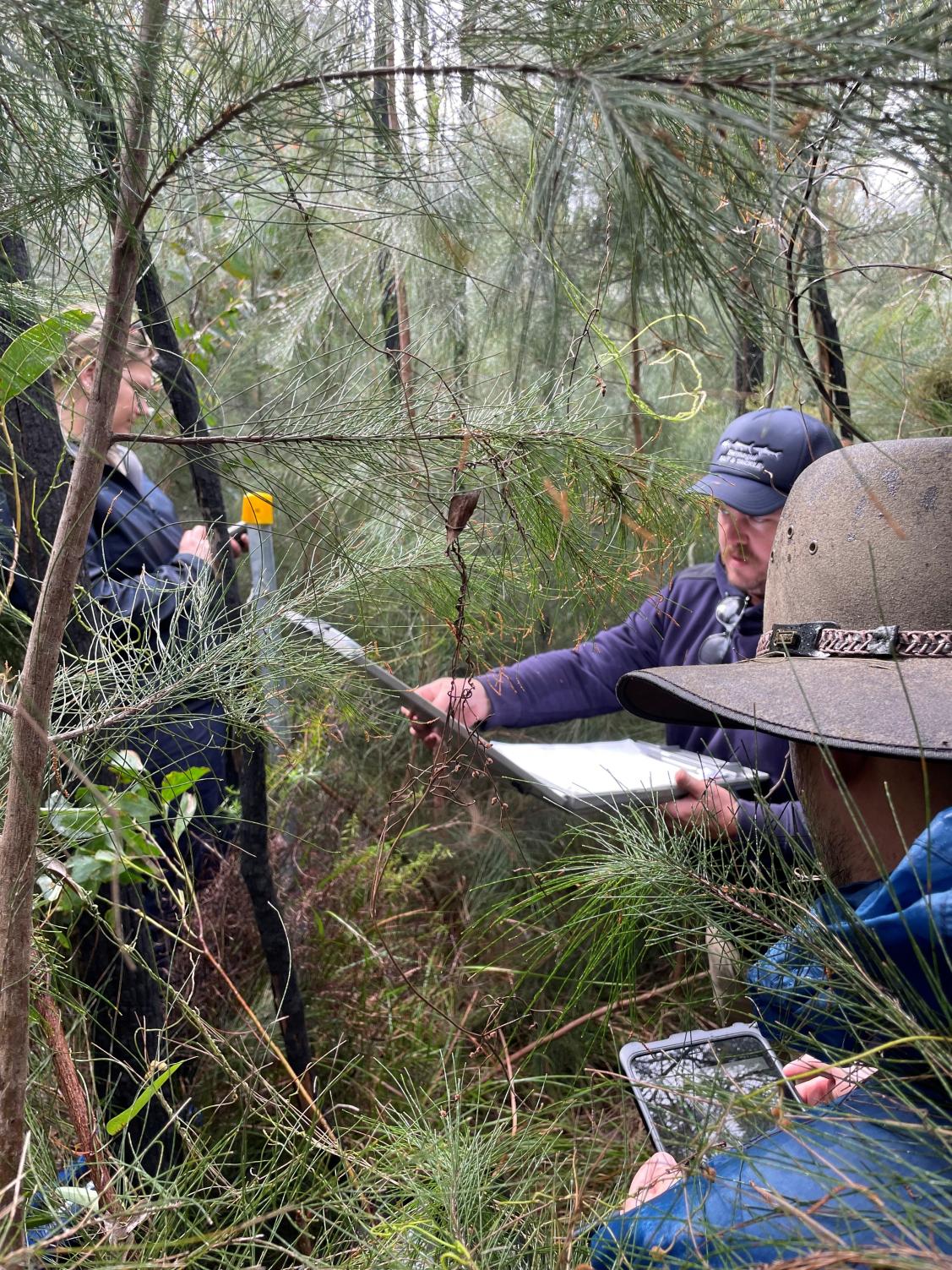Applied Bushfire Science long-term monitoring program

The ABSP team are establishing a long-term monitoring and research framework to better understand ecosystem responses to the fire regime in response to Recommendation 36 of the 2020 NSW Bushfire Inquiry. The results will be used to validate and improve the scale and appropriateness of fire thresholds within NSW and to improve fire response knowledge for species and key fauna habitat attributes. The work considers fire frequency, seasonality, severity, and spatial extent, and the needs of fauna in the development of updated thresholds. This will allow for the integration of an adaptive management approach to fire management for biodiversity outcomes. A total of 125 long-term monitoring sites have been established in dry sclerophyll forest across NSW since the monitoring project began in 2021. The program can be rolled out across all vegetation types in NSW.
Scientists from the ABSP team are also collaborating with community rangers from the Merrimans LALC to measure the long-term benefits of cultural land management.
Cameras and audio recorders are being used and are in place along the South Coast, Southern Tablelands/ Kosciuszko, and central NSW. These images and audio recordings from these devices will help scientists understand animal responses to variation in fire regimes (such as fire severity and frequency), which will help scientists understand, predict, and address the impacts of future fires on biodiversity.